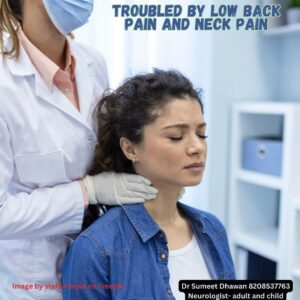Cervical spondylosis, also known as cervical osteoarthritis or degenerative disc disease of the neck, is a common age-related condition that affects the cervical spine, which is the portion of the spine in the neck region. This condition involves the wear and tear of the spinal discs and joints in the neck over time. It is a natural part of the aging process, and most people will experience some degree of cervical spondylosis as they get older.
Key features and aspects of cervical spondylosis include:
1. Degeneration of Spinal Discs:
The cervical spine is made up of vertebrae separated by intervertebral discs. These discs can degenerate with age, becoming thinner and less flexible. As the discs lose height and hydration, they provide less cushioning and shock absorption.

2. Formation of Bone Spurs:
To compensate for the loss of disc height, the body may form bony growths called osteophytes or bone spurs. These can develop around the edges of the vertebrae and may put pressure on nearby nerves or the spinal cord.
3. Changes in Joints:
The facet joints in the cervical spine can undergo changes, leading to inflammation and pain. These joints may become more susceptible to arthritis.
Common symptoms of cervical spondylosis can include:
- Neck pain or stiffness
- Pain that radiates into the shoulders, arms, or hands
- Numbness or tingling in the upper extremities
- Weakness in the arms or hands
- Headaches, especially at the back of the head
The severity of cervical spondylosis can vary. In some cases, it may cause no noticeable symptoms, while in others, it can result in significant discomfort and functional limitations.

Treatment for cervical spondylosis often focuses on managing pain and improving mobility and function. It may include:
If you are experiencing symptoms related to cervical spondylosis, it’s important to consult a healthcare professional, such as an orthopedic specialist or a neurologist, for a proper diagnosis and to discuss the most appropriate treatment options for your specific condition.
Read our other blogs on Cervical Neck pain treatment
What posture changes are recommended for cervical neck pain treatment?- read here
What sleeping posture can prevent cervical pain?
What posture changes are recommended for cervical neck pain treatment?
What life style and postures can cause cervical pain?
Cervical neck pain- Act before it becomes very serious!!
Dizziness in the Elderly: Investigating Common Vertigo Causes
what Driving Posture can prevent neck pain?
Neck pain blog by Cleveland Clinic
Neck pain blog by American Association of neurological surgeons
Review article on neck pain and cervical treatment treatment from PGIMER spine specialist doctor